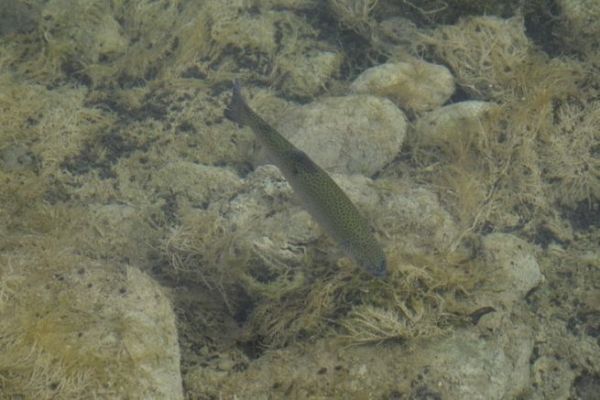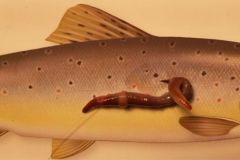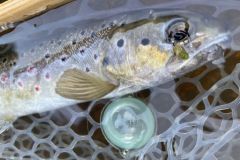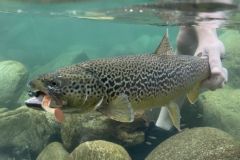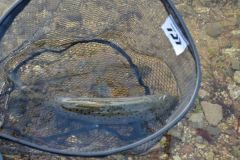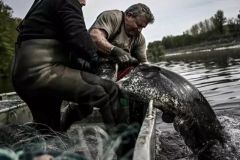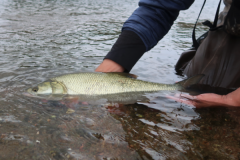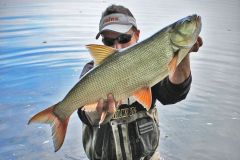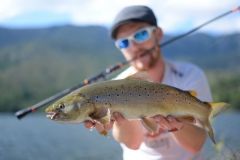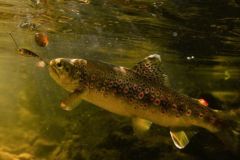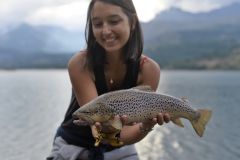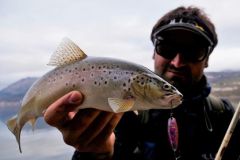Drawn into the separatist madness of the fishing world, I myself had long developed a penchant for snubbing this fish and its fishermen. I discovered it in the Bouillouses, where the illusion of its wildness led me to agree to fish for it, even though it was not endemic. It was a conclusive first contact that encouraged me to find out more about its American origins. I then realized that it was a most exceptional sport fish. Reading accounts of its fishing in the biggest rivers of Montana and Colorado finally convinced me of its uniqueness.
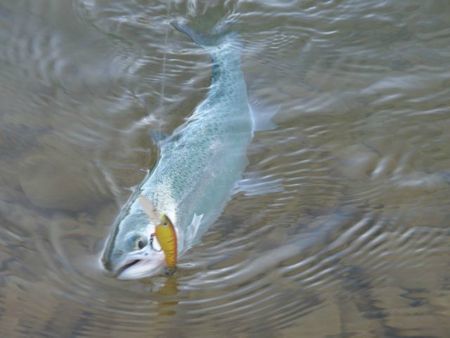
Discover area and reservoir fishing
A few years later, and after a series of coincidences, I rediscovered these fish in a very different way. Area fishing! In Italy and then in France, I took part in competitions. Competition is a different experience from itinerant fishing, but just as respectable. In this context, the "bassine" trout is the focus of attention. Its behavior is analyzed from every angle. Our Japanese friends meticulously study it, as only they can.
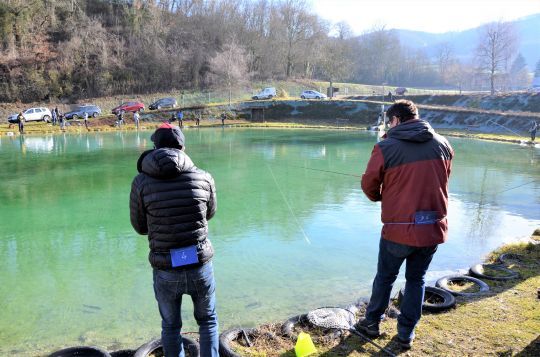
I also had the opportunity to fight giant specimens in fly or lure tanks. An extraordinary moment that we don't always get to experience.
What about releases?
But today, we're not interested in all his different types of fishing, but in the famous and controversial trout release. Trout releases, or ephemeral fishing. Sitting on their chairs, beer in hand, cooler open and drooling, release fishermen are caricatured.
My involvement in association fishing has opened my eyes to a world with nuances far from these caricatures. When I joined the board of my AAPPMA, I wanted to see a complete end to trout releases. Alerted by my federation president and a few old hands, we decided to take our time, continue the releases and analyze the situation.
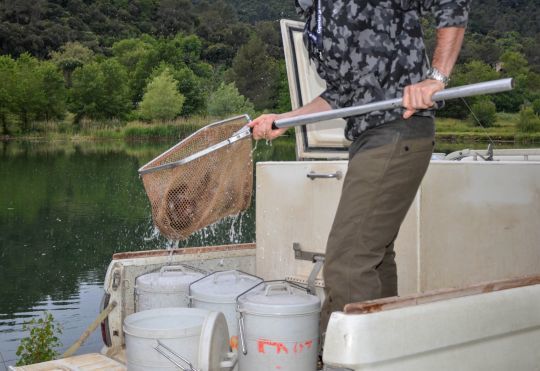
From the very first releases, I noticed the diversity of the people present. Children were taking their first steps as fishermen, people with reduced mobility were enjoying the pleasures of fishing, and finally, older people were able to extend their fishing experience by getting over their old age.
During the first release, the most obvious thing for me was the pleasure people had in meeting again. Eavesdropping on their conversations: "How's your wife doing since last time?" how's your wife doing since last time?" "Have your grandchildren graduated from high school?" "How nice is your new cane? These releases, which I used to look down on as butchery, were in fact just one of those moments of strong social ties that are so lacking in these troubled times. But all was not rosy.
Some fishermen behaved shockingly. Incivilities between anglers, some garbage left on the ground, but above all a lack of respect for the fish. We had to improve all this and rework the "product". I apologize for the businessman's expression.
Taking the initiative
Thanks to the Var fishing federation, we've had a steady supply of trout for several years now. Without going into detail, you should know that the Var Federation operates on the basis of solidarity between small and large AAPPMAs. It distributes the allocations among these associations.
This led to the establishment of the association's policy and the priorities of our AAPPMA:
- Working with and protecting the environment
- The fight against invasive species
- Training young fishermen
- Environmental education for schoolchildren
- Increase local contacts with elected officials
- Developing fishing
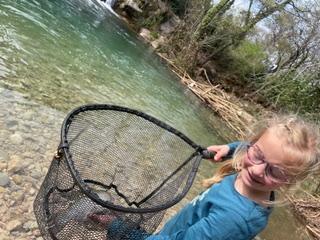
As far as trout releases are concerned, we have made several choices.
- First, we decided that fishermen must always have the opportunity to eat fish.
- That fish and the environment must be respected.
- That everyone's behavior must be cordial.
So we took action to ensure that our choices were respected. First, we increased the number of release sectors by offering three types of routes:
- A canal-style course in the commune of La Crau, aimed more at family fishing. A long-established course.
- A course in Solliès-Pont for anglers who want to try their hand at first category fishing with currents.
- And a third, difficult-to-access lake route for walkers.
These so-called ephemeral trout releases have no impact on the river. The trout are released within 72 hours of their introduction. They have no time to impact the environment.
To make some fishermen aware that they need to change their behavior. Initially, we reduced the number of release days to create a shock and the conditions for an exchange with the fishermen. We knew that they would complain and contact us. Face-to-face explanations are always more effective than social networking.
At the same time, we have created a fourth course. This is a winter trout run that allows no-kill fishing in winter and sampling in summer. No impact on the environment, as this is an environment where virtually no fish live. Warm water, sewage treatment plants, high low-water levels and cormorants have taken their toll on most aquatic life. By the third year, we'd noticed a complete change in behavior, with all anglers embracing our ambitions.
We therefore decided to increase the number of release days. Given that our allocation was constant, we had to find a way of solving this equation: more release days for the same number of fish.
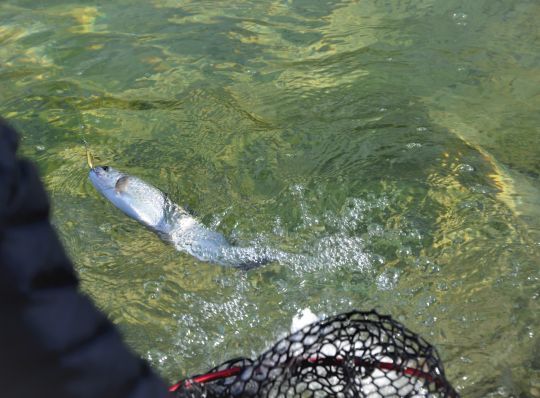
Lowering the quota of samples
We have decided to reduce the quota from 6 to three trout per day. We can put fewer fish on each release to satisfy the same number of anglers, and multiply the number of release days. It's a win-win-win: more release days, more anglers who can enjoy them, and more often.
3 trout correspond to the potential consumption of a family with two children. And finally, we've decided to reserve one morning for children. In the afternoon, all anglers will be able to come and fish, but the morning will be dedicated to children.
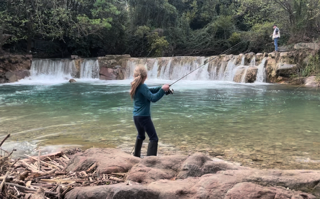
We try to take a global approach to trout releases. Modern fishing must, of course, move away from dependence on trout releases, but there's nothing to stop us building a varied and successful offer. AAPPMAs need to focus on their core missions of protecting the aquatic environment and developing fishing. Let's never take the easy way out.
